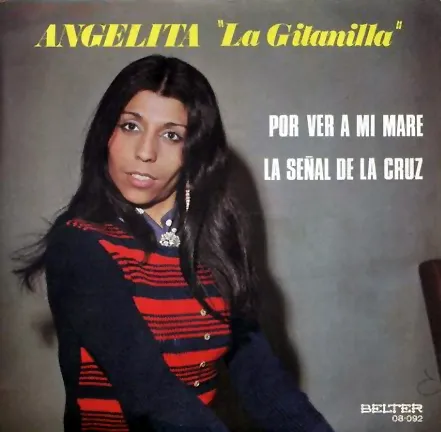Angelita Vargas, the gypsy dancer par excellence of recent decades, has died in the San Juan de Dios de Bormujos hospital (in San Juan de Aznalfarache) after suffering a stroke. Retired from the stage due to hemiplegia, she dedicated herself in recent years to training.

Angelita Varga. Foto: Martín Guerrero. Archivo Casa Patas.
The great dancer Angelita Vargas (Seville, 1946), to whom Matilde Coral gave the nickname of “La Gitanilla”, a nickname with which she recorded an album of singing, has died.
Angelia was 77 years old and in poor health after suffering a stroke in 2011 that affected her mobility. Her daughter Yolanda confessed to the newspaper El Mundo “the suffering that my mother has gone through after having made so many people happy.” She married José Cortés Moreno, “El Biencasao” at the age of 15, also a dancer; His grandmother (on his father’s side) and two of his brothers also danced.
She had been admitted to the San Juan de Dios hospital in Bormujos since Friday, November 6, after suffering a stroke that, in the end, she has not overcome. Although he was from Triana, his second home and where he lived was San Juan de Aznalfarache, also in Seville, whose city council has decreed two days of mourning.

Angelita Vargas grabó un disco antes de triunfar al baile.
Angelita Vargas and her gypsy dance of pure flamenco
Angelita Vargas always wanted to be artists and was already dancing when she was only three years old. At the age of eight he began to tour different flamenco festivals throughout Spain. He worked at the Sevillian tablao Los Gallos and the Madrid tablao Las Brujas.
He participated in the acclaimed production “Flamenco Puro”, which caused a sensation first in Paris, during the Festival d’Automne, and then in New York, where it had a season on Broadway. Angelita toured Holland, Germany, South America, Japan and other countries. She performed with her family at the Lope de Vega Theater during the VI Flamenco Biennial of Seville and performed as a soloist in the show “La Diosa”, performed in Madrid and Seville.
At the Lope de Vega Theater, he shared the stage with Aurora Vargas in “Azabache y Coral” in April 1997, and in 1998 he participated in “Huellas: Antología de un tiempo” at the Teatro de la Maestranza. He presented his group at EXPO’98 in Lisbon and was part of the project “El Flamenco y el Son Cubano”, an initiative of the Diputación de Sevilla. After making waves at the Queen Elizabeth Hall in London and the National Concert Hall in Dublin in the “Women in Tradition” series, Angelita toured Japan extensively with her company.

In 1980, she received the “Pastora Imperio” prize at the National Flamenco Art Competition of Cordoba, which revealed her as one of the great figures of Andalusian flamenco festivals. It will be the first of major accolades over the years. After his retirement in 2011, his main dedication was teaching. U.S. Students or Japan mourn his death on social media.
Internationally respected and admired, the magazine Time I would say of her: “Angelita Vargas speaks the body language of the gypsy soul.” She herself assumed her flamenco as a gypsy in essence. “I am a pure gypsy. From father, from mother, from the whole family. Flamenco comes from the gypsy,” he explained.
Manuela Carrasco, Antonio Canales, Pepe Torres and El Farru performed in this tribute to Angelita Vargas held in the fourth edition of theTacón Flamenco Festival.
El Tacón Flamenco is a multi-day festival that takes place in the Sevillian town of Utrera. This cycle of flamenco shows is organized by the Cultural Association El Compás que nos Une since 2015.
The Peña Flamenca Torres Macarena of Seville writes: “Angelita Vargas represents the essence of authentic gypsy dance. His is an art with an old-fashioned flavor, temperamental, full of inspiration, with powerful feet and beautiful armbands, which respects the structures and exercises an absolute mastery of the rhythm.”
